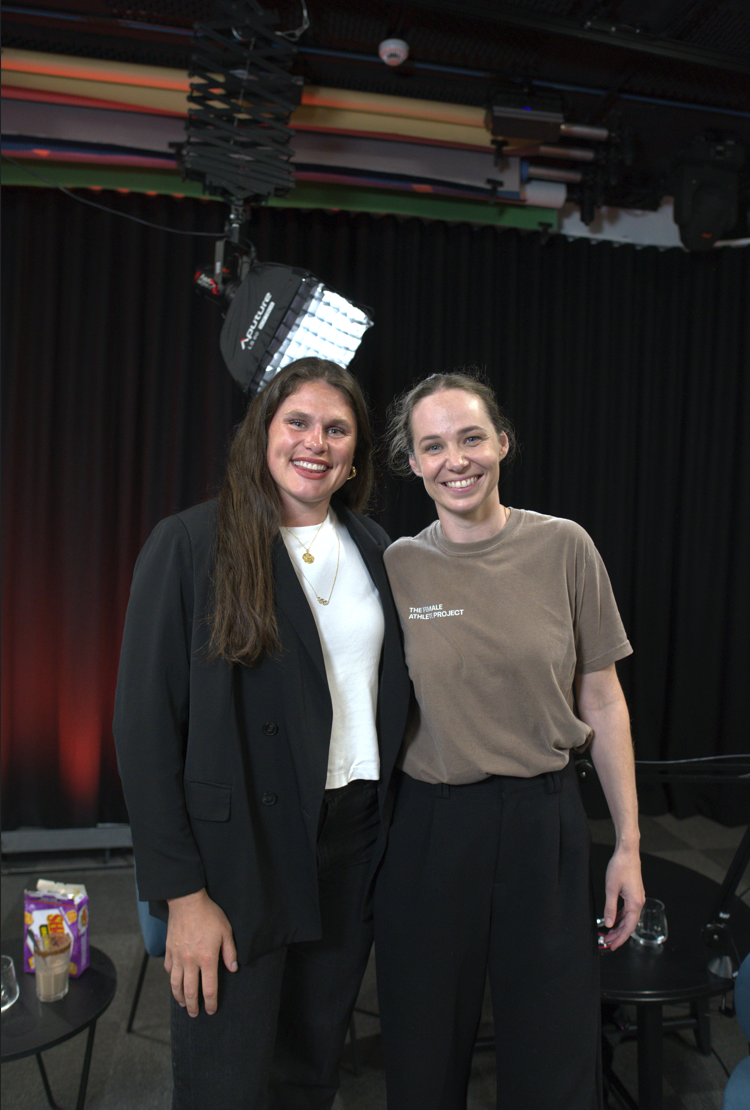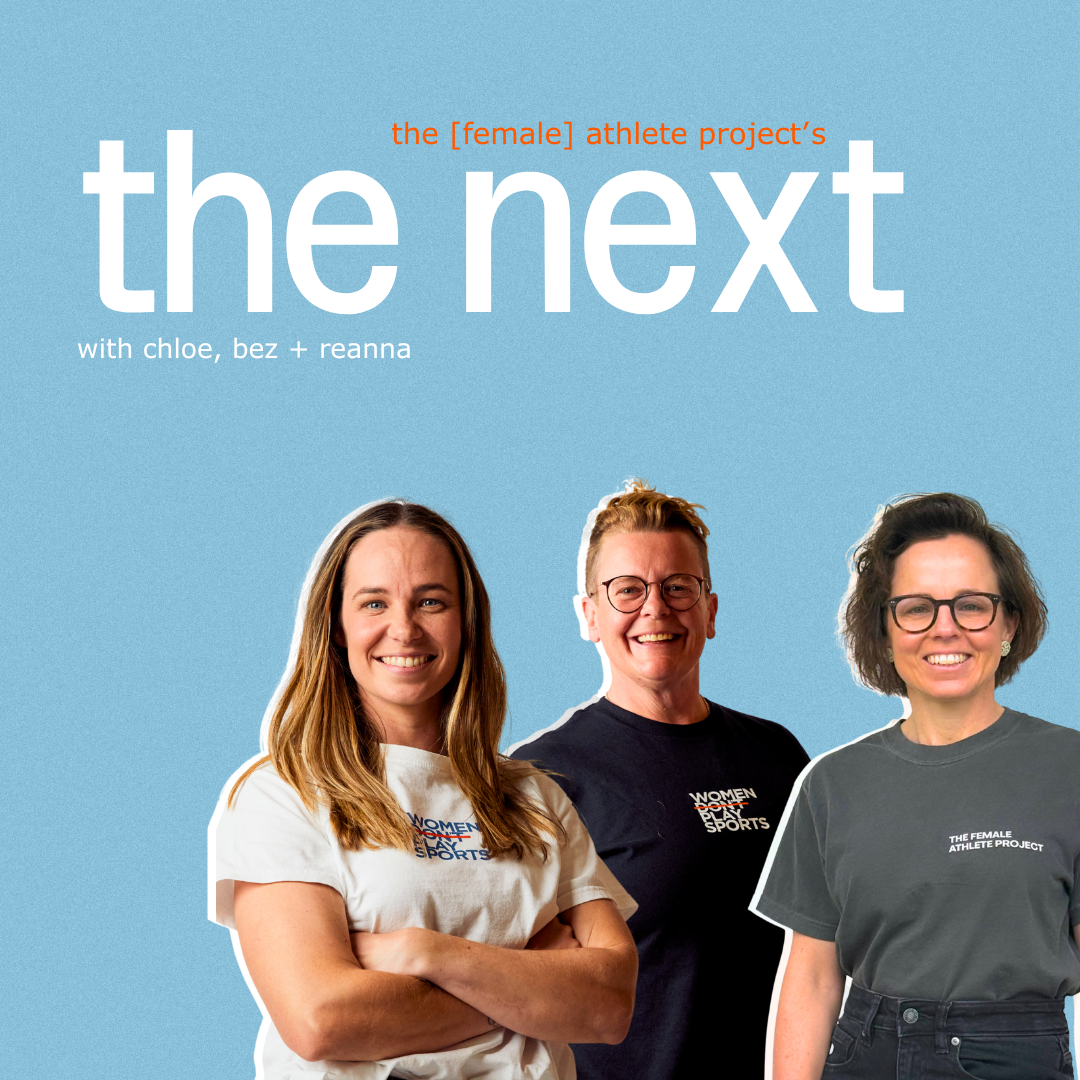THE NEXT is a new monthly podcast from The Female Athlete Project.
Each episode, futurist and former athlete Reanna Browne joins Chloe and Bez to explore what’s changing in women’s sport, before it hits the headlines. We shine a light on the pockets of the future already here - the signals of change that are quietly [or not-so-quietly] reshaping women's sport in the present. Not to predict what’s coming, but to notice what’s already in motion.
What is Rea noticing? Big Money
“I’ve been paying attention to what I would call the rise of big sport, the top tier of sport.
While a lot of women’s sport is not there yet, looking at the top end of sport is really important because that sets the template and it shapes a sense of what we think success looks like in sport.”
Here are five signals [pockets of this future in the present] that Rea is noticing this month:
1. The Rise of Big Sport
"Sport has evolved into a colossal, billion-dollar industry. But sport hasn’t just gotten richer, it’s changing shape."
In the US, we’ve seen a lot of women-specific leagues starting up.
EXAMPLE: Project B is a new global women’s basketball league launching in 2026, founded by ex-Google and Skype executives. Project B will have 66 players divided into six teams, playing 5-on-5 games. Each player will receive a larger salary than those currently offered by the WNBA.
“When you talk about billionaires being involved in sport, they’re generally not doing it for altruistic reasons; they’re doing it to make money.” - Bez Morton

2. Sport is now an asset class to invest in
“Sport is becoming something investors buy like shares or property, expecting returns and resale value.”
Private equity is starting to move into global sport.
2/3 of MLB and NBA teams have private equity backing [Source: PitchBook]
In 2024, the NFL agreed to let private equity funds buy minority stakes in teams.
“We’re essentially saying Wall Street can enter into one of America’s biggest leagues.”
And now it’s definitely starting to happen in women's sport.
EXAMPLE: The National Women’s Soccer League in the United States.
In 2024, the league changed their rules to allow private equity, but with guardrails.
Private equity funds can own 5–20% in up to 3 clubs, or they can own up to 100% of a single team—but only via an evergreen fund built to hold long-term.
Sovereign wealth funds, state-run investment vehicles and pension funds are off the table, for now.

It’s also happening a lot closer to home than we think.
EXAMPLE: In 2021, global Private Equity firm, Silver Lake paid $140 million for 33% of the A-Leagues.
But we’re also seeing Australian sporting organisations reject bids from private equity.
In 2021, a $6.5 million bid to privatise Super Netball. The deal was rejected. Then-Netball Australia CEO turned down bid, saying 'We don’t know whether private equity is what is best for our sport just yet'.
In 2023, Football Australia considered selling the men’s and women’s national teams, the Socceroos and Matildas, to private equity for 99 years. It Didn’t go ahead as there were privacy concerns for participants and not-for-profit tax implications.
“If your consistent revenue streams, like commercial partners and broadcast deals, are not allowing you to be competitive in the sporting space then why do we look so poorly on organisations who branch out and find a different revenue stream and if that comes in the form of private equity, so be it.” - Bez Morton

3. New ways of monetizing
“Sport used to make money just on game day. Now you can get money from sport 24/7, its like a 24/7 shop front.”
Sport has new ways of being able to monetise
Big money and private equity are investing in sport because there are so many ways to make money now, it’s not just through ticket sales or going to the game anymore.
Our viewing habits have also shifted; the majority of our sports consumption is highlights packages, not full games.
Another form of investment we’re seeing is nations funding sport. Sport is becoming an investment for states.
EXAMPLE: Saudi Arabia's Public Investment Fund bankrolled LIV Golf and owns English Premier League Club, Newcastle United.

4. Main Character Energy from Athletes
“In parallel to sport changing, so are athletes.
There’s been a big shift from athletes just seeking sponsorship to now wanting equity and ownership. They’re not just watching the transformation, they’re becoming part of the transformers.”
Athletes are now venture capitalists like Sam Kerr, Pat Cummins, Dylan Alcott, Chloe Dalton who have backed Athletic Ventures' $25 million VC fund ‘elite athletes investing in champion founders Athletic Ventures.
“The whole concept is about elite athletes who try and find elite founders and bring together exceptional skills that you get in sport, being able to identify and find those to back businesses that align with athletic ventures.” - Chloe Dalton
Athletes are creating their own leagues, such as Unrivalled and Project B, which both pay more than a WNBA wage for a shorter season/playing schedule.
“How much of the motivation behind setting up these leagues is dissatisfaction with the current league they’re in?” - Bez Morton

5. The Pushback Begins
With every trend or change, there’s a countertrend. We’re also seeing fans growing in influence and creating greater pushback.
“It's a good indicator that when there’s no fan consent, things don’t just get to just happen willy nilly.”
EXAMPLE: In 2024, German fans quashed a €1 billion Private equity deal for media rights by using remote control cars to stop games and by putting bicycle locks on goalposts.
But we’re also seeing players pushing back more.
EXAMPLE: Football Player Associations in Europe are suing FIFA, arguing the expanded 2025 Club World Cup violates players’ rights by giving them little to no off-season.
“If you’re an athlete, your body ends up paying the interest because the calendars now serve the capital and the people that are investing in this space.”
Now women's sport is at a crossroads
“The growth is real but uneven. Women's sport is becoming an asset, it's an undercapitalised market that is finally getting noticed.”
And the numbers don’t lie.
WNBA expansion: $50 million (10x previous prices)
NWSL: Angel City: $250 million valuation
WNBA Draft: Outdrew MLB, NHL, UFC combined
IWPL Cricket: Five-year media rights deal worth $176 USD
And there’s two paths that the growth of women’s sports can take…
Path A - Copy the Men's Template
“It's the known path. But do we want the known problems?”
What it looks like: Fast visibility, big money, investor-first metrics, scale quickly, monetise aggressively.
The risks we'd inherit: Packed schedules, bodies paying for growth, price inflation, reputational entanglements, fan backlash
We've also seen players earning money to sit out leagues and national duties.
EXAMPLE: Diana Taurasi sat out the entire 2015 WNBA season as a strategic choice to rest after playing year-round basketball, as her Russian club team, UMMC Ekaterinburg, paid her to skip the season and prepare for their next campaign.
“It’s been a really interesting experience for me as an athlete understanding my intellectual property and how that works when I’m representing a club or a national team.” – Chloe Dalton
Path A may also see sport become too expensive. People are being priced out of attending live sport and it becomes a luxury product in a way.
Path B - Build Something Different
"Do we use this moment to prototype a better model and experiment with women’s sports financial structures?”
We’ve already started to see some clubs experiment with women’s sports:
Angel City FC: 10% of every sponsorship to the community, which is hardcoded in contracts.
Mercury13: Untangling women's teams from men's clubs
Kansas City Current: First purpose-built women's stadium
Atlanta Dream/Cash App: Erased $10 million in medical debt for 3,500 Atlantans
“I love the fact that women’s sport has the opportunity to do it a different way. I think it’s something that happened out of necessity but I think we now need to hang onto it as it’s becoming more and more mainstream.” -Bez Morton
So what? Now what?
“Is women's sport the last chance to choose differently, or is it already too late? And if we know the ending of this story from watching men's sport, why are we reading from the same script?
It’s going to take some courage, but I think there’s definitely an opportunity for us to do it in a way that’s potentially more sustainable, more ethical and absolutely more community focused."
What is the future of women’s sports we want to inhabit? What stories do we want to see more of and less of?



